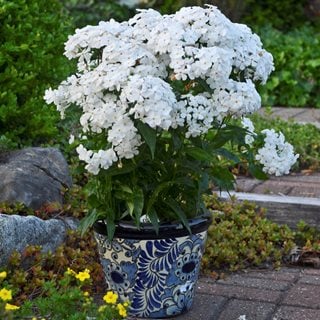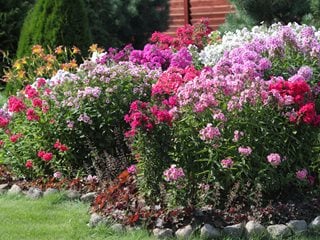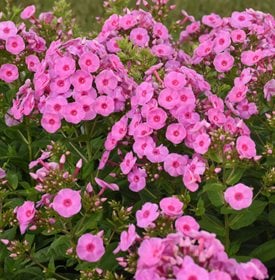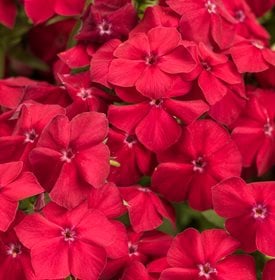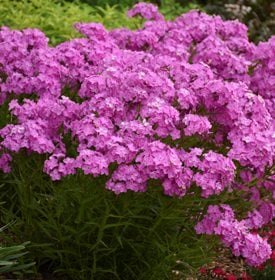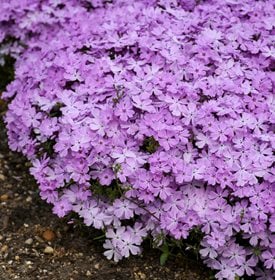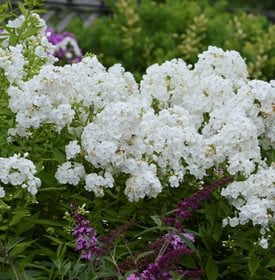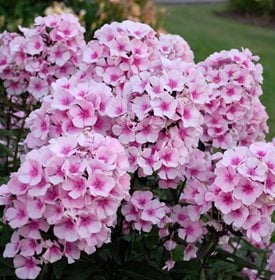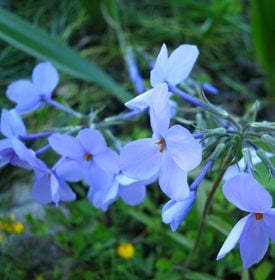The Complete Guide to Growing Phlox Flowers
Capture the essence of summertime with showy, long-blooming phlox plantsA cottage garden mainstay, phlox owes its enduring popularity to its clouds of billowy blooms and no-fuss nature. But the real icing on the cake is the long flowering season, with varieties beginning to bloom in early spring and others blooming until the first hard frost in fall. “Phlox carries the garden through the dog days of summer, holding down the fort until the asters and blazing stars come on board,” says plant specialist James Locklear, author of Phlox: A Natural History and Gardener's Guide.
You’ll also find phlox in nearly every hue on the color wheel, even hard-to-find shades of blue. In fact, the choice of colors and cultivars is so vast, it can be daunting to choose among them. Here’s a look at some of our top picks, along with advice for incorporating phlox into your own garden.
On this page: Basics | Types | Growing | Care Tips | Pictures | Using in the Garden
PHLOX BASICS
Zones:
Perennials hardy in Zones 3 or 4 through 9, depending on the species; Phlox drummondii is an annual.
Height:
6 inches to 4 feet tall, depending on the type.
Flowers:
Dainty five-petaled flowers are packed by the dozens into dense clusters, or panicles. The flowers are often sweetly fragrant, and some cultivars have central eyes in contrasting colors.
Foliage:
While most have green leaves, some have variegated foliage with creamy white or yellow margins.
Bloom time:
Depends on the type. Phlox are often categorized as early season, midseason, and late season bloomers. By planting varieties of each, you’ll have flowers all summer long and well into autumn.
Pros:
- Long-lived, often lasting in the garden for decades under hospitable growing conditions.
- Provides color in the heat of the summer, when many other perennials begin to fade.
- Attracts bees, butterflies, and hummingbirds. (See more plants that attract bees, butterflies, and hummingbirds.)
- Tall varieties rarely need staking.
Cons:
- May be grazed on by deer and rabbits.
- Although phlox are easy to start from seed and often self-sow, the offspring of most cultivars do not remain true to the color of the parent plant.
TYPES OF PHLOX
Phlox paniculata:
- Common names: Garden phlox, summer phlox, tall phlox, border phlox
- Size: 2 to 4 feet tall, 2 to 3 feet wide
- An upright perennial, hardy in Zones 4-8, that grows in clumps. Pointed elliptical leaves are deep green and 4 to 6 inches long. Fragrant tubular flowers are packed densely in panicles and bloom July to September.
Phlox drummondii:
- Common names: Annual phlox, medium phlox
- Size: 1 to 2 feet tall and wide
- An annual plant that blooms from mid-spring to mid-summer. Oblong, lance-shaped leaves are bright green and 3 inches long.
Phlox divaricata:
- Common names: Wild sweet William, woodland phlox
- Size: 8 to 12 inches tall and wide
- A spreading perennial, hardy in Zones 3-8, that blooms loose clusters of fragrant flowers in mid-spring. Two-inch long elliptical leaves forms mats of foilage.
Phlox stolonifera:
- Common names: Creeping phlox, moss phlox
- Size: 4 to 6 inches tall
- A low-growing perennial, hardy in Zones 5-9, that blooms early to late spring. Its leaves are oblong to oval and 3 inches long.
Phlox subulata:
- Common names: Also called creeping phlox, moss phlox
- Size: 4 to 6 inches tall
- A vigorous, spreading phlox that blooms a carpet of flowers in mid-spring. Different from P. stolonifera in that its leaves are linear and 1 inch long. This perennial phlox is hardy in Zones 3-9.
GROWING PHLOX
Light requirements:
Although phlox flowers best when given full sun, most are native to open or filtered woodlands and don’t mind a bit of shade, especially when grown in hot southern climates. As a general rule, aim for about 6 hours of sun exposure daily.
Soil:
Grow in moist, fertile, well-drained soil enriched with a layer of compost or other organic matter. Phlox prefers soil that’s slightly alkaline and will benefit from regular applications of lime if your soil tends to be acidic (see Garden Soil 101).
How to plant:
If you are growing bare-root or potted plants, put them in the ground in spring after the danger of frost is past, spacing plants about 18 to 24 inches apart to ensure good air circulation. Thoroughly water, and then apply a layer of mulch around the root zone to help keep the roots cool and moist. You can also grow from seed, but they must be started indoors in late winter (see Seed Starting).
PHLOX CARE TIPS
Watering:
Phlox doesn’t like drought and should be watered during dry spells or whenever you see the foliage begin to wilt. Ideally, they should receive about an inch of water per week during the growing season. To keep foliage healthy, water in the morning and at the rootzone, rather than overhead.
Pruning and deadheading:
Phlox doesn’t normally require pruning, but if you want to delay blooming and get bushier plants with more flower heads, pinch or cut back the stems by one-third to one-half in early summer. Deadheading the spent flowers may also extend the bloom period and prevent phlox spreading from unwanted reseeding.
Diseases:
The #1 enemy of phlox is powdery mildew, particularly in humid climates during the hot, muggy days of summer. Plants growing in partial shade are also more susceptible. The best preventive measure is to improve air circulation by thinning plants in early spring. Also, provide adequate spacing when planting and look for mildew-resistant cultivars.
Pests:
Phlox can also be susceptible to damage by spider mites.
Dividing perennial phlox:
To prevent overcrowding and improve the vigor of your plants, divide them every 3 to 4 years. Telltale signs that phlox is ready for division include sparser blooming and centers that begin to weaken or die out.
Winter care for perennial phlox:
After the first killing frost, cut back the stems just above above the soil line and remove and discard the foliage, especially if your plants have been affected by powdery mildew. In colder regions, protect the roots by applying a layer of mulch before the ground freezes.
PICTURES
USING PHLOX IN THE GARDEN
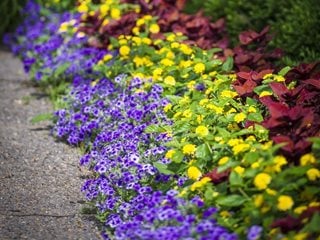
Intensia® Blueberry phlox in front of Luscious® Bananarama™ lantana and ColorBlaze® Rediculous® coleus. Photo by: Proven Winners.
Few plants can perk up the languishing midsummer landscape like phlox. Use them wherever you need to add a punch of color.
- Use them in mass plantings, cottage gardens, meadow gardens, pollinator patches, cut flower gardens, and containers.
- Use taller garden phlox in the back or middle of a border, and lower-growing varieties in the front.
- Mix with flowering shrubs such as abelia.
RELATED:
Hydrangea
Create a Butterfly Garden
Color in the Garden
Updated 3/11/21

